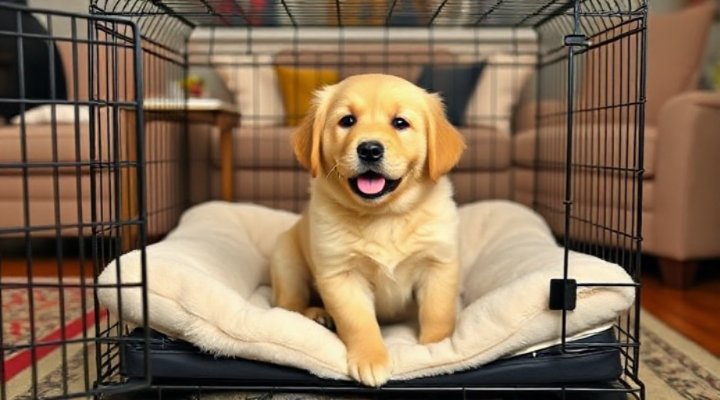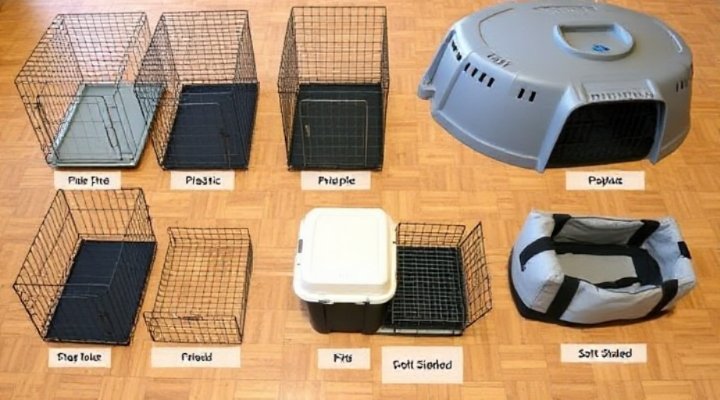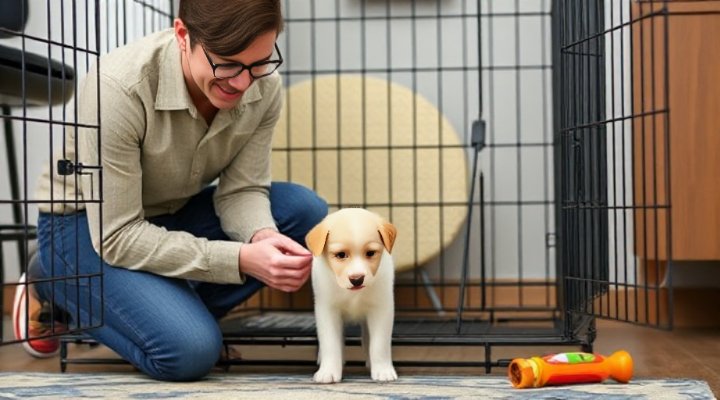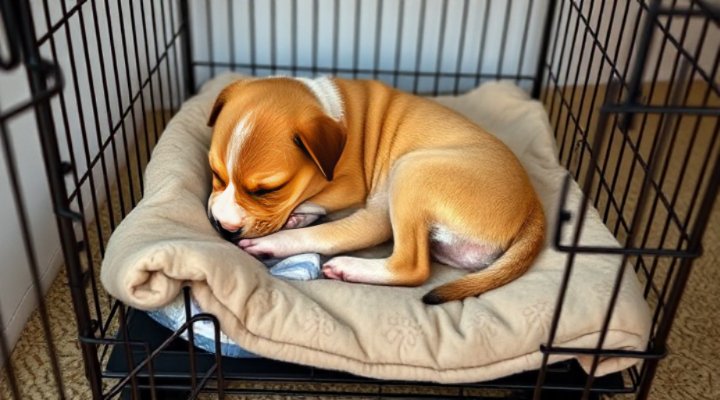A dog crate is an essential tool for puppy training, providing a safe and comfortable space for your furry friend. Whether you’re housebreaking your puppy or simply giving them a cozy spot to rest, a well-chosen crate can make all the difference. In this article, we’ll explore the best practices for selecting and using a dog crate for your puppy, ensuring a positive experience for both of you.

Why Use a Dog Crate for Your Puppy?
First and foremost, a dog crate serves as a den-like space where your puppy can feel secure. Dogs are naturally den animals, and a crate can mimic this instinctual need for a safe haven. Additionally, crates are invaluable for puppy training, helping with housebreaking, preventing destructive behavior, and providing a safe space during travel.
Choosing the Right Dog Crate
When selecting a dog crate for your puppy, consider the following factors:
- Size: The crate should be large enough for your puppy to stand, turn around, and lie down comfortably, but not so large that they can use one end as a bathroom.
- Material: Wire crates offer good ventilation and visibility, while plastic crates are more enclosed and cozy. Soft-sided crates are lightweight and portable but may not be suitable for chewers.
- Durability: Ensure the crate is sturdy enough to withstand your puppy’s energy and chewing habits.

Introducing Your Puppy to the Crate
Introducing your puppy to their new crate should be a gradual and positive experience. Start by placing the crate in a common area where your puppy spends time. Leave the door open and encourage exploration with treats and toys. For more tips on crate training, check out our crate training guide.

Making the Crate Comfortable
To make the crate inviting, add soft bedding, a favorite toy, and perhaps an item with your scent. Avoid using blankets or towels that your puppy might chew and ingest. Over time, your puppy will associate the crate with comfort and security.
Common Mistakes to Avoid
While crate training is highly effective, there are some common pitfalls to avoid:
- Using the crate as punishment: This can create negative associations with the crate.
- Leaving your puppy in the crate too long: Puppies need frequent breaks for potty and play.
- Ignoring your puppy’s distress: If your puppy is anxious, take steps to make the crate more appealing.

Final Thoughts
A dog crate for your puppy is more than just a training tool—it’s a safe haven that can help your puppy feel secure and comfortable. By choosing the right crate and introducing it properly, you’ll set the foundation for a well-behaved and happy dog. For more information on puppy training, visit the American Kennel Club.
Related Keywords: dog crate, puppy training, crate training, dog behavior, puppy care
